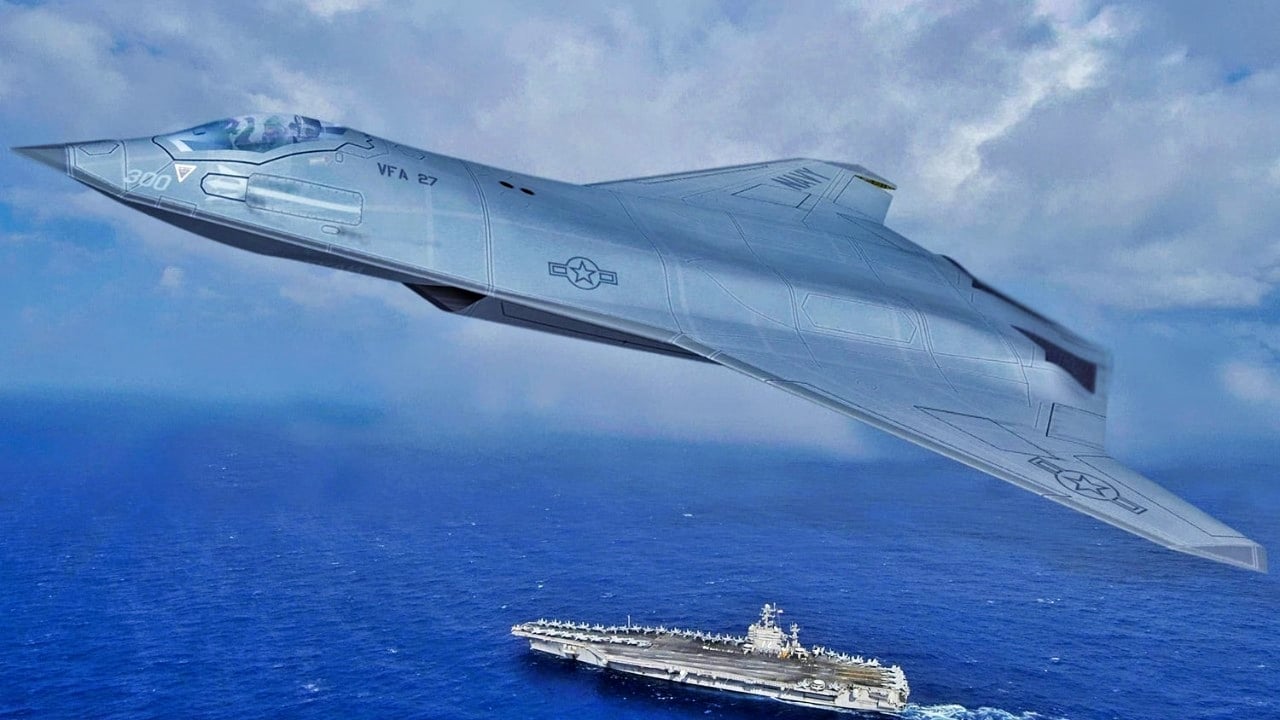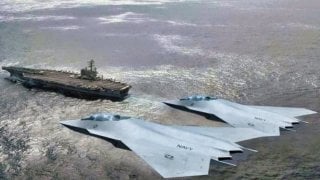The Navy's F/A-XX 6th Generation Fighter Might Get a 90% Cut in Funding
The future of the U.S. Navy’s F/A-XX sixth-generation fighter program faces uncertainty as the Senate Armed Services Committee proposes a 90% funding cut, reducing the budget to under $54 million.
Summary and Key Points You Need To Know: The future of the U.S. Navy’s F/A-XX sixth-generation fighter program faces uncertainty as the Senate Armed Services Committee proposes a 90% funding cut, reducing the budget to under $54 million.

-This decision comes as the Navy prioritizes existing platforms like the F-35C amidst rising tensions with China. The F/A-XX, intended to replace aging F/A-18 Super Hornets, will include autonomous loyal wingman drones and operate in anti-access/area denial environments.
-The Air Force’s Next-Generation Air Dominance (NGAD) program also faces budget constraints, with both services reevaluating their next-gen plans due to financial pressures.
F/A-XX Update
As tensions grow among the world’s most powerful nations, the race to produce next-generation technology has never been more important. But the future of the U.S. military’s next generation of warplanes is uncertain – it is so both for the U.S. Navy’s F/A-XX fighter jet program and the Air Force’s Next-Generation Air Dominance (NGAD).
Simple Flying reported this week that a draft bill in the U.S. Senate cuts funding for the Navy’s sixth-generation aircraft program by 90%. As detailed by the latest draft of the National Defense Authorization Act for the 2025 Fiscal Year, the Senate Armed Service Committee wants to cut spending on the F/A-XX to just under $54 million.
While the Navy says it still intends to develop its next carrier-based manned aircraft, it is currently prioritizing existing platforms like the F-35C Lightning II fifth-generation fighter. Considering the potential of a full-blown war with Beijing, the Navy’s focus on more urgent priorities makes sense.
An Overview of F/A-XX
The Navy’s F/A-18 Super Hornet and EA-18G Growler are inching toward the end of their production capacity. This creates the need for a next-generation fighter.
The service first issued a formal request for a replacement aircraft over a decade ago. The next-gen fighter program emerged publicly for the first time as a component of a Special Access Program under the moniker “Link Plumeria,” which remains highly classified. All the big name manufacturers – Boeing, Lockheed Martin and Northrop Grumman – jumped into the competition to secure a contract with the Navy to produce the new aircraft. Pratt & Whitney and General Electric are competing to produce the engines.
Similar to the Air Force’s NGAD plans, the F/A-XX is intended to represent a “family of systems” and will incorporate swarms of Collaborative Combat Aircraft (CCAs) once introduced. These CCAs are highly autonomous loyal wingmen drones that will accompany the next-generation fighter in flight, tethered by systems driven by artificial intelligence. Perhaps most significant is the expectation that the future platform can operate in anti-access/area denial environments.
NGAD’s Funding Also Trimmed
Considering the F/A-XX’s expected capabilities, it is worth wondering why the Senate Armed Services Committee wants to slash the program’s funding. However, it is most vital to fund the Navy’s present systems, as it could be years before next-gen platforms are ready to fly.

The Air Force is also coming to terms with significant budgetary constraints. Recently, Secretary of the Air Force Frank Kendall stated in an interview that “I can tell you that we are looking at the NGAD platform design concept to see if it’s the right concept or not. … We’re looking at whether we can do something that’s less expensive and do some trade-offs there.”
While the urgent introduction of both NGAD and F/A-XX may not be possible in light of recent budget cuts, these next-generation programs represent the futures of both services.
About the Author: Maya Carlin
Maya Carlin, National Security Writer with The National Interest, is an analyst with the Center for Security Policy and a former Anna Sobol Levy Fellow at IDC Herzliya in Israel. She has by-lines in many publications, including The National Interest, Jerusalem Post, and Times of Israel. You can follow her on Twitter: @MayaCarlin.
All images are Creative Commons and/or Shutterstock.


